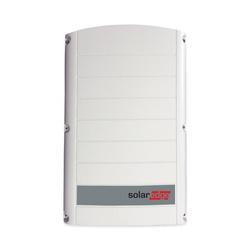-
9kw Hybrid Solar Inverter become your support at any condition
9kw Hybrid Solar Inverter is known as autonomous solar power plants, network systems for the sale of electricity at the Green tariff and in a combined model. Their manufacturer gives a 10-year warranty on the operability of the converters. Lead-acid and lithium batteries can connect to these devices. The 9kw Hybrid Solar Inverter solution is to sell electricity at a green tariff, to provide electricity to households in real-time, & also for backup energy storage.
Principle of operation
Sunlight entering the surface of solar panels causes a physical reaction (the movement of electrons from one layer of silicon to another).
At the same time, solar panels produce a direct current that enters the inverter. Inside the inverter, the alternating current converts into a direct current.
After this, the current transmit to household appliances. Due to the electricity production, you can able to charge the batteries. Then use them in the evening or the absence of electricity.
Not always the station can produce enough electricity (due to weather conditions) in this case the 9kw Hybrid Solar Inverter can mix energy from solar panels with electricity from the general network. A hybrid solar station usually consists of such components: a hybrid inverter, solar panels, roof mounts, a charge controller, batteries (battery), two protection units on the AC and DC side, fuses, cables, and connecting connectors.
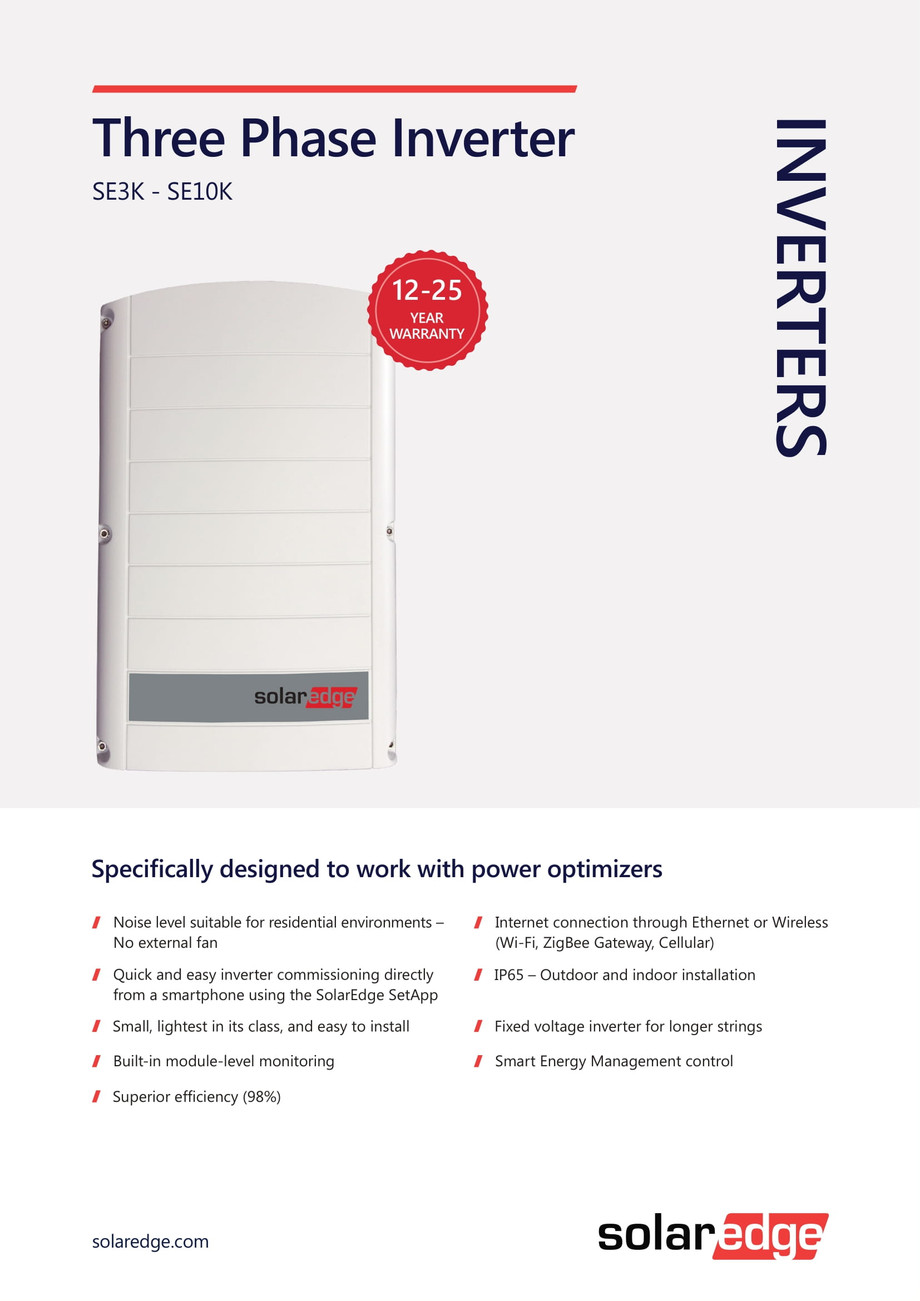
The Premium hybrid station series is a complete solution that includes a set of stations based on Premium equipment:
- The hybrid inverter of European or Asian production with a warranty of 5 years allows you to work offline without the use of batteries in the daytime.
- monocrystalline panels
- Lithium rechargeable batteries (batteries), can be used daily with several charge cycles from 5000.
For the hybrid series Premium 9 kW in stand-alone mode, it is allowed to use powerful household appliances: a microwave oven, a boiler, an electric stove, also weakly powerful devices such as a laptop, and chargers for mobile phones, radio, circulation pumps. The maximum load of simultaneously turned-on devices can reach 7.68 kW. You can increase the loads by changing the capacity of the battery.
Features
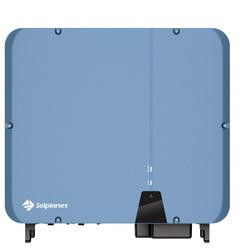
These hybrid solar inverters from Poland have batteries that make it possible to operate in the presence of electricity and its absence. After sunset, the station continues to work due to the connected accumulating devices. The station’s operating time depends on the capacity of the battery.
To connect a hybrid station to the “green tariff”, according to the current legislation, the capacity of the solar station must be equal to or less than the power supplied at the facility. For example, it is planned to install a 3 kW station, and under an agreement with Oblenergo, the permitted capacity is only 2 kW, in which case it is necessary to write an application for an increase in capacity otherwise the station will not be put into operation. Also, to put the station under the “green tariff” into operation, it will be necessary to install a meter with bidirectional accounting, the estimated cost of 10-12 thousand hryvnias for a three-phase device, 6-7 thousand for a single-phase one.
In the case of using the station for its own needs, without connecting to the “green tariff”, an increase in capacity is not required. To date, there are no solutions that could 100% provide the house with electricity only at the expense of the solar station, so if there is no electricity from the central power grid at the facility, the hybrid station will need to be equipped with a diesel generator.
-
7kw 3 Phase Solar Inverters the best industrial inverter
7kw 3 Phase Solar Inverter is highly efficient and is perfect for small-size solar. All 7kw 3 Phase Solar Inverters have the highest build quality and a wide range of operating modes.
The many intelligent features make the 7kw 3 Phase Solar Inverter one of the most efficient in its class: for example, the built-in data logging function, the simplicity of connecting to the Internet via WLAN, or replaceable card technology for the integration of additional functions in the future.
The housing of three-phase network inverters has a degree of protection IP66, which allows them to be installed outdoors, including in the open sun.
Features of the 7kw 3 Phase Solar Inverter:
- Pure sine wave output;
- Maximum efficiency 98.0%;
- The adaptation efficiency of MPT is 99.9%;
- Installation indoors and outdoors (degree of protection IP 65);
- Connecting an external network;
- Power limitation during overload;
- Protection against incorrect polarity;
- Energy management (output with relay decoupling of potentials);
- WLAN / Ethernet LAN control interface;
- Monitoring and management through the cloud service
- Connection and data transfer
- Pulse load control in the receiver interface
- Has 2x RS422 (RJ45 connector)
- Input for overvoltage protection (S0-Meter Interface);
- Connector for Modbus RTU SunSpec or counter connection.
THREE-PHASE NETWORK INVERTERS SO FAR SOLAR
7kw 3 Phase Solar Inverter is used in solar stations that operate without batteries. All generated energy immediately goes to the 3-phase network for consumption. When the power consumption decreases, the generation power decreases accordingly. It is monitored by current sensors & the ARPC unit. It is necessary so that the excess generated energy does not go into the network and is not counted by the meter as consumed. Domestic electricity meters are one-way and do not know how to subtract. With the introduction of the “green tariff”, when it becomes possible to sell surplus electricity to sales companies, then these restrictions will disappear, and it will be possible to earn additional money.
Prerequisites for work
A feature of the work of network inverters is the need for a regular electrical network.
The line of 3-phase inverters consists of devices of different capacities: from 1 to 66 kW. Almost every inverter has 2 independent MPPT trackers built-in with the possibility of uneven power distribution, except the 55 and 66 kW models, which have 3 MPPT trackers.
The presence of the WI-FI module allows you to connect the inverter to the Internet and monitor the system parameters after registration on the manufacturer’s website.
Three-phase solar edge inverter is very common in industrial enterprises, office buildings, business centres, country houses, or other facilities where there is electricity consumption in the daytime & there is an external power grid. The use of network inverters can significantly reduce energy costs, and the payback is only from 1 year to 5 years.
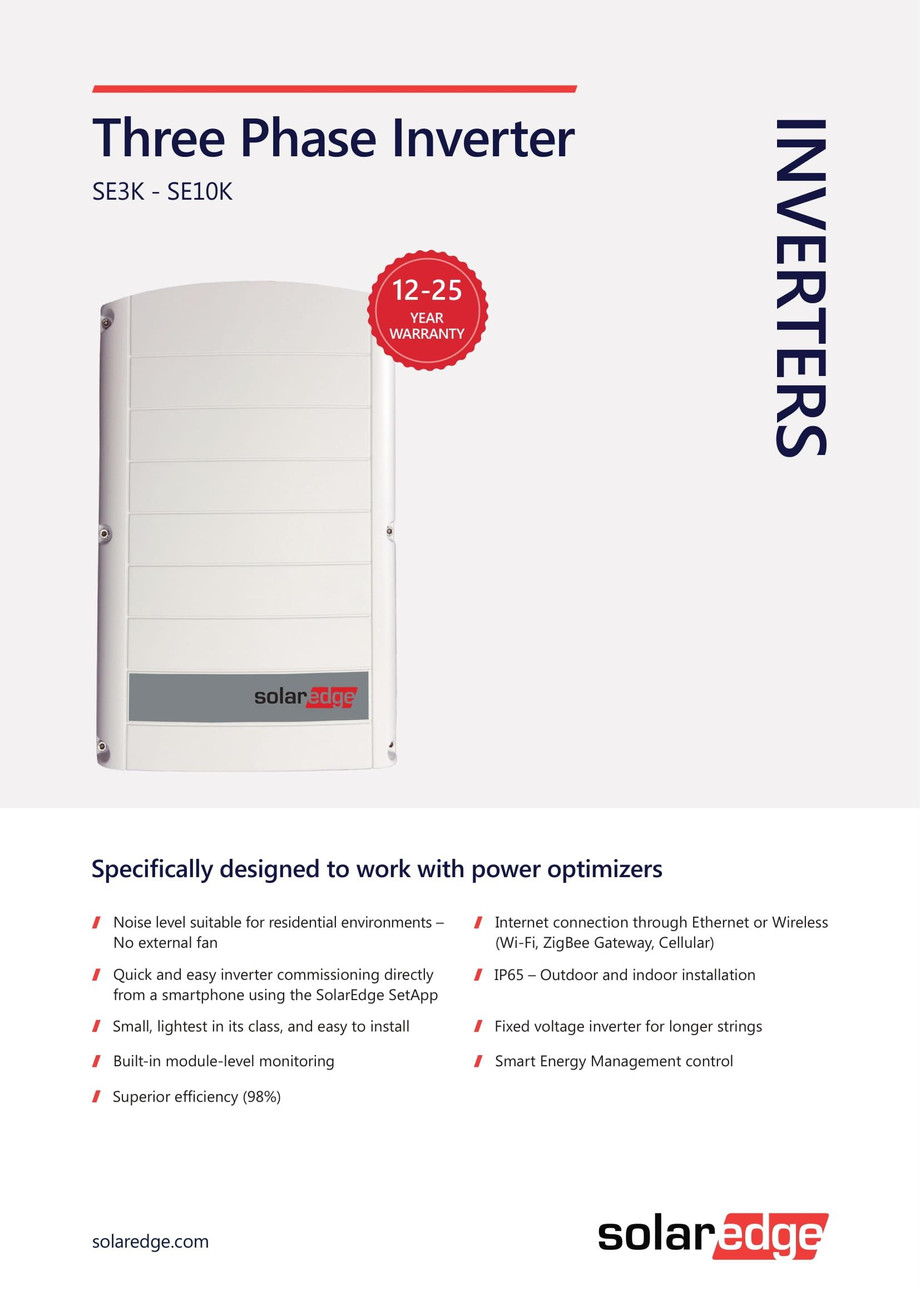
Currently, an increasing number of network operators in various countries are setting limits on the return of energy to the urban network from photovoltaic modules. Thanks to the dynamic reduction in power, Solaredge Inverter offers a solution for optimal management of power generation and output. The inverter first supplies electricity to the household consumers in your home & then reduces the output power of the system to the maximum allowable value allowed by the network operator.
-
7kw 3 Phase Solar Inverters the best Industrial Inverter
7kw 3 Phase Solar Inverter is highly efficient and is perfect for small-size solar. All 7kw 3 Phase Solar Inverters have the highest build quality and a wide range of operating modes.
The many intelligent features make the 7kw 3 Phase Solar Inverter one of the most efficient in its class: for example, the built-in data logging function, the simplicity of connecting to the Internet via WLAN, or replaceable card technology for the integration of additional functions in the future.
The housing of three-phase network inverters has a degree of protection IP66, which allows them to be installed outdoors, including in the open sun.
Features of the 7kw 3 Phase Solar Inverter:
- Pure sine wave output;
- Maximum efficiency 98.0%;
- The adaptation efficiency of MPT is 99.9%;
- Installation indoors and outdoors (degree of protection IP 65);
- Connecting an external network;
- Power limitation during overload;
- Protection against incorrect polarity;
- Energy management (output with relay decoupling of potentials);
- WLAN / Ethernet LAN control interface;
- Monitoring and management through the cloud service
- Connection and data transfer
- Pulse load control in the receiver interface
- Has 2x RS422 (RJ45 connector)
- Input for overvoltage protection (S0-Meter Interface);
- Connector for Modbus RTU SunSpec or counter connection.
THREE-PHASE NETWORK INVERTERS SO FAR SOLAR
7kw 3 Phase Solar Inverter is used in solar stations that operate without batteries. All generated energy immediately goes to the 3-phase network for consumption. When the power consumption decreases, the generation power decreases accordingly. It is monitored by current sensors & the ARPC unit. It is necessary so that the excess generated energy does not go into the network and is not counted by the meter as consumed. Domestic electricity meters are one-way and do not know how to subtract. With the introduction of the “green tariff”, when it becomes possible to sell surplus electricity to sales companies, then these restrictions will disappear, and it will be possible to earn additional money.
Prerequisites for work
A feature of the work of network inverters is the need for a regular electrical network.
The line of 3-phase inverters consists of devices of different capacities: from 1 to 66 kW. Almost every inverter has 2 independent MPPT trackers built-in with the possibility of uneven power distribution, except the 55 and 66 kW models, which have 3 MPPT trackers.
The presence of the WI-FI module allows you to connect the inverter to the Internet and monitor the system parameters after registration on the manufacturer’s website.
Three-phase solar edge inverter is very common in industrial enterprises, office buildings, business centres, country houses, or other facilities where there is electricity consumption in the daytime & there is an external power grid. The use of network inverters can significantly reduce energy costs, and the payback is only from 1 year to 5 years.
Currently, an increasing number of network operators in various countries are setting limits on the return of energy to the urban network from photovoltaic modules. Thanks to the dynamic reduction in power, Solaredge Inverter offers a solution for optimal management of power generation and output. The inverter first supplies electricity to the household consumers in your home & then reduces the output power of the system to the maximum allowable value allowed by the network operator.
-
Easily convert sun energy to electricity with Solar PV Hybrid Inverter
Produce free electricity from the sun and store it in a battery to use when needed. It is only possible thanks to an On Off-grid hybrid inverter. It controls and coordinates the operation of both the photovoltaic system & the battery.
Difference between traditional & hybrid inverters
A traditional photovoltaic inverter is a system that converts the direct current (DC or DC) produced by the photovoltaic system into alternating current (AC or AC) for domestic use. In addition, the inverter also manages the flow of energy between the plant, utilities, and the grid.
A hybrid inverter is an “enhanced” photovoltaic inverter that, in addition to converting direct current into alternating current, can manage and coordinate the flows of electricity from the PV system, the battery, and the grid. The hybrid Solar PV inverter option “decides” whether to send the electricity directly to the user for immediate consumption or whether to store it in the battery. In the same way, it manages the energy from the battery or the network to domestic users.
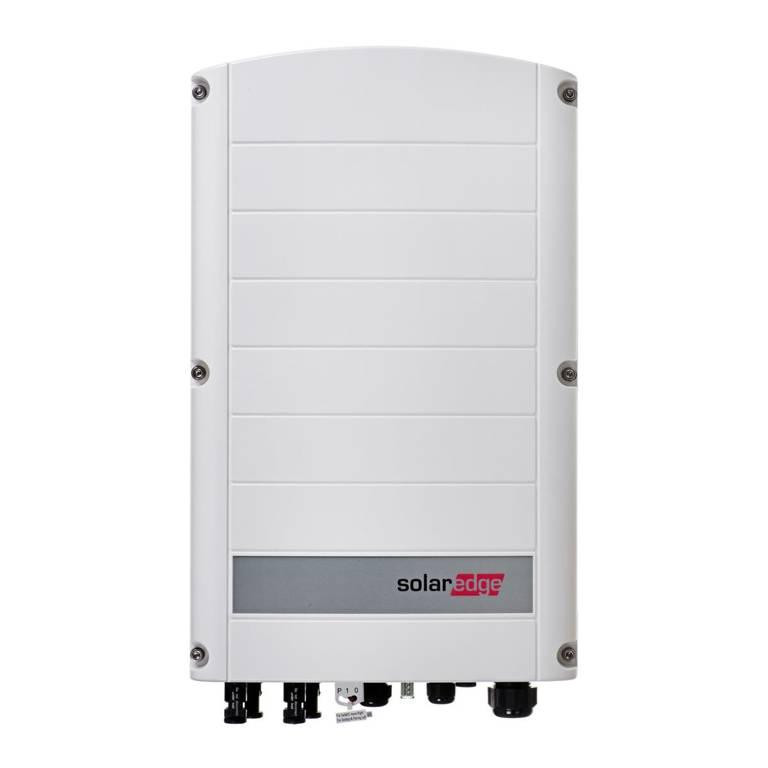
When using a hybrid inverter?
You can install the hybrid inverter on a photovoltaic system with a storage battery and a PV system without a battery. Installing a hybrid inverter allows you to prepare for the subsequent addition of a storage system.
There is a Goodwe 3-phase hybrid inverter. It is for the combined management of energy generated from multiple sources (photovoltaic, wind, etc.) and hybrid inverters that also work as EPS, that is, to provide energy to priority loads even in the event of a power failure from the grid (black-out).
How does a hybrid inverter work?
- In the morning a hybrid inverter conveys the energy produced by the photovoltaic modules directly to domestic users, while the excess production is accumulated in the battery if any.
- Later in the day, when the battery is fully charged, the excess energy produced is fed into the grid, normally sold to the network operator under the on-site exchange regime.
- In the evening, when the modules stop producing energy, the inverter activates the battery, which powers the house for its needs. If the energy stored in the battery is fully used, then the inverter automatically takes action on the withdrawal from the national electricity grid.
The advantages of a hybrid inverter
- Complete control of the photovoltaic system and the storage system
- Coordinated management of production, networking, and battery usage
- Flexibility and customization to the user’s needs, thanks to software and remote management and monitoring apps, including Wi-Fi
- 10kw 3 Phase Hybrid Solar Inverter maximizing self-consumption
- Preparation of the photovoltaic system for subsequent addition of storage batteries
- Possibility of operation as EPS (anti-blackout) on some models described below
- Reduced footprint and saves space
- Cost savings for the purchase of a single device.
Choosing a quality and high-tech hybrid inverter guarantees optimal use of the photovoltaic system and the battery. It also allows having a system ready for the installation of the battery at a later time.

